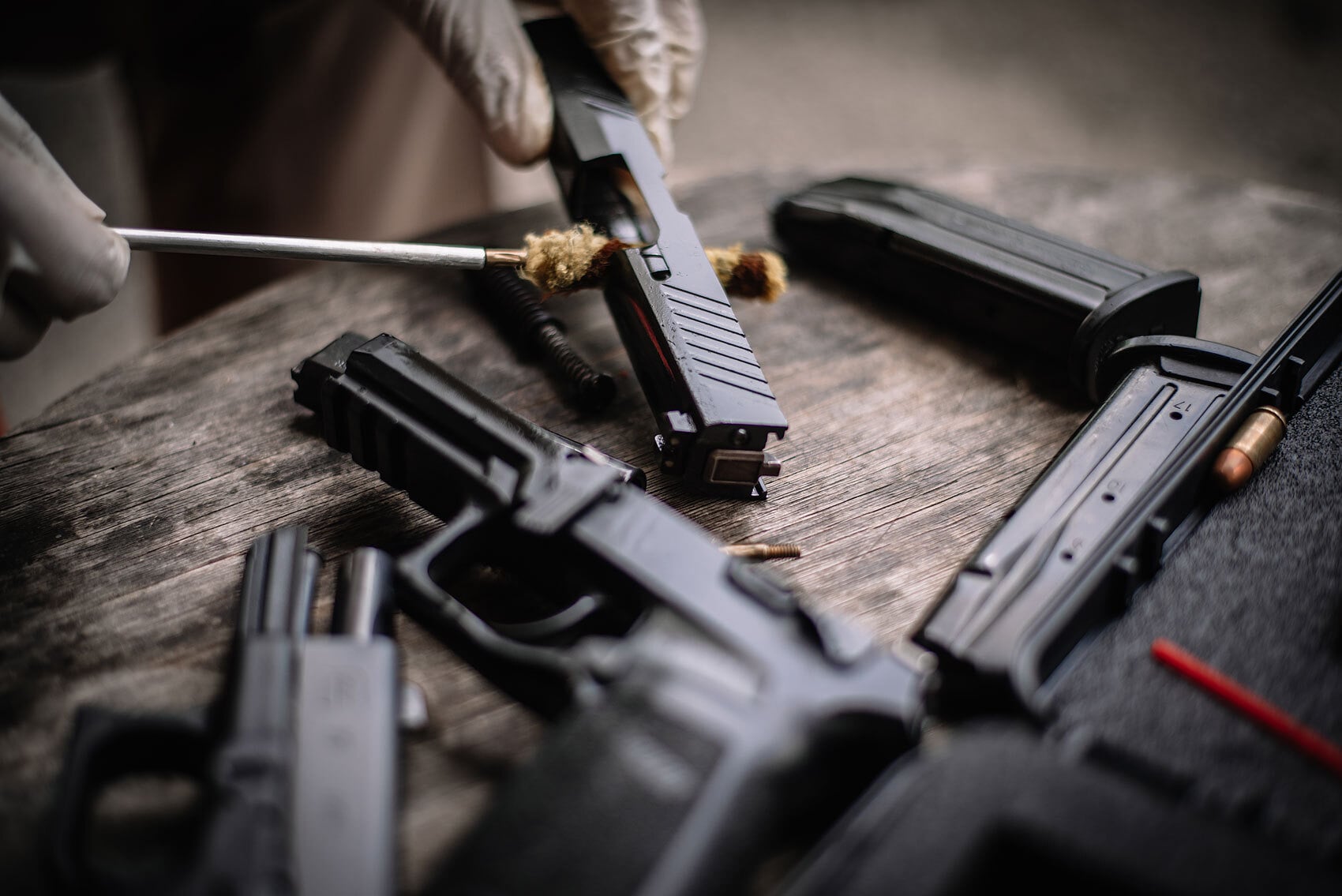
Owning a handgun comes with a significant responsibility beyond just knowing how to use it safely. Regularly cleaning and maintaining your handgun is essential for its proper function, reliability, and longevity. Whether you’re a seasoned gun owner or a beginner, this guide will walk you through the steps to effectively clean your handgun.
How to Effectively Clean Your Handgun
Why Cleaning is Important
-
Safety
A clean handgun is a safer one. Residue buildup can lead to misfires or malfunctions, putting you and those around you at risk.
-
Reliability
Proper maintenance ensures that your handgun functions consistently, reducing the chance of jams or failures.
-
Longevity
Regular cleaning and maintenance will extend the life of your handgun, protecting your investment.
Materials You’ll Need
-
Cleaning Kit
A handgun cleaning kit usually includes cleaning rods, brushes, patches, and cleaning solvent. Check out the Triumph Systems Universal Cleaning Kit!
-
Cleaning Solvent, Lubricant & Protectant
Choose high-quality products designed for firearms for proper function and longevity. Avoid using household cleaners and oils, as they can damage your gun. Cleaning solvent, lubricant, and protectant are typically sold together as “CLP” — a single solution that cleans, lubricates, and protects.
Looking for a top-notch solution to clean, lubricate, and protect your firearms? Check out Triumph Systems’ Arsenal Aid CLP — it’s made in the U.S.A.!
Most CLPs smell terrible (if you know, you know) and are toxic to breathe around. Triumph’s Arsenal Aid CLP can be used in a non-ventilated room because it’s non-toxic and it actually smells good! That’s because it’s made with food-grade ingredients — you could literally brush your teeth with it! (although we don’t recommend that…)
Arsenal Aid is exclusively available in all Triumph Systems cleaning kits. Order yours today!
-
Bore Snake or Cleaning Rod
This tool helps you clean the barrel effectively.
-
Cleaning Patches
These are used for applying solvent and removing debris from the bore.
-
Nylon or Brass Brush
A brush helps dislodge stubborn fouling in the barrel and other parts.
-
Microfiber Cloth
This is ideal for wiping down and polishing the exterior of your handgun.
The Cleaning Process
-
Safety First
Always ensure your handgun is unloaded before starting the cleaning process. Remove the magazine and visually inspect the chamber.
-
Disassembly
Refer to your handgun’s user manual for disassembly instructions. Usually, you’ll need to remove the slide barrel, and other key components for a thorough clean.
-
Barrel Cleaning
Attach a bore brush or bore snake to your cleaning rod. Soak a cleaning patch with solvent and run it through the barrel from the breech end to the muzzle several times. Follow this up with a few dry patches until they come out clean. Finish by running a lightly oiled patch through the barrel.
-
Slide and Frame
Use a nylon or brass brush to scrub the slide and frame, especially in areas where fouling tends to accumulate. Wipe these parts down with a solvent-soaked cloth and then a dry cloth. Apply a small amount of lubricating oil to the appropriate areas as per your handgun’s manual.
-
Magazines
Disassemble the magazine and clean the components with a cloth and solvent. Pay attention to the follower and spring. Let it dry then reassemble.
-
Reassembly
Follow your handgun’s manual to reassemble all the parts correctly.
-
Ensure Your Firearm is Assembled Properly
Before storing your handgun, conduct a final inspection to ensure all parts are clean and lubricated appropriately. Also do a function check to ensure the firearm is assembled properly.
Maintenance Schedule
Regular maintenance is key to firearm longevity. Develop a cleaning schedule based on your handgun’s manual, but here are some general guidelines:
-
After Each Use:
At a minimum, give your handgun a quick wipe down and check for visible fouling.
-
Every 250-500 rounds:
Conduct a thorough cleaning and inspection.
-
Annually:
Even if you haven’t used your handgun, it’s a good idea to perform a full cleaning at least once a year.
Should I Clean My Handgun After Dry Fire Training?
Yes, you should always inspect, clean, and lubricate your firearm after use, even if you haven’t fired any live ammunition. Oil, dust, and debris can be introduced while loading, handling, firing, and unloading your handgun.
Make the Most out of Your Investment
Properly cleaning your handgun is not only a matter of safety but also essential for its reliable performance and longevity. Make it a habit to maintain your firearm regularly, and always refer to your handgun’s manual for specific instructions. With the right tools, knowledge, and commitment to safety, you can ensure your handgun serves you well for years to come.